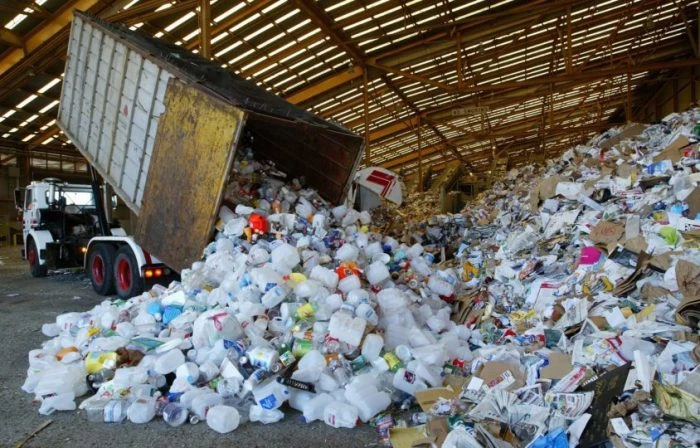
Mr. NGUYỄN QUANG HUÂN, a member of the Committee for Science, Technology, and Environment of the National Assembly, spoke with Saigon Investment on issues surrounding the use of an appropriate technology.
JOURNALIST: - Sir, how do you assess the current situation of waste treatment in our country?
Mr. NGUYỄN QUANG HUÂN: - Domestic waste is a big problem in Vietnam, especially in all the big cities. In Hanoi, there is the Nam Son landfill, in Ho Chi Minh City there is the Da Phuoc landfill, in Da Nang there is the Khanh Son landfill, and in Hai Phong there is the Trang Cat landfill.
According to statistics, in Da Nang one daily household waste is around 1,100 tons or more than 400,000 tons per year. Therefore, the Khanh Son landfill currently contains more than 3 million tons of garbage, which stinks and pollutes the surrounding environment. It is estimated that by 2030, domestic waste in Da Nang will double to about 2,200 tons per day. In Ho Chi Minh City, about 8,000 tons to 9,000 tons of domestic waste is generated every single day, which amounts to nearly 4 million tons of waste per year.
- Sir, there is an opinion that technology is creating a bottleneck for waste treatment in Vietnam today. So which waste treatment technology do you consider the most suitable?
- In my opinion, so far there is no complete waste treatment technology. As seen in the data of the Ministry of Natural Resources and Environment, 70% of the waste in our country is being treated by burial in the ground. Only about 20% of this waste is properly landfilled, i.e., complying with the 261-2001/BXD standards. These are sanitary landfills capable of treating leachate waste. However, the Law on Environmental Protection 2020 does not encourage any type of landfills because the nature of waste landfill technology is currently very outdated.
At present, there are a number of factories using waste treatment technology to produce biogas for electricity generation such as the waste treatment plant in Quang Binh province. However, the limitation of this plant is that the waste is sorted by hand which is quite toxic for the workers, and the amount of electricity produced is not as much as expected. The price of electricity from biogas of 8.5 cents per kWh is lower than burning waste to generate electricity, which is 10.35 cents per kWh, which is why investors are not interested.
There is also a waste treatment plant with more common technology, which is composting and creating microbial fertilizer. However, this technology is not thorough in classifying waste as it is easy to mix heavy metals in microbial fertilizer and it is only suitable for industrial crops. If applied to agricultural crops, it can kill plants and pollute the soil.
The technology being used quite a lot now is manual burning of waste which does not generate electricity and causes high air pollution levels. The Ministry of Natural Resources and Environment has issued National Technical Regulation QCVN 61-MT:2016/BTNMT on domestic solid waste incinerators, requiring the incinerators to ensure two chambers and to reach 950 degrees Celsius with minimum storage time of two seconds. However, this is not suitable for advanced waste incineration.
Another technology that can help recover energy is to combine biogas with RDF pellet, which is solid fuel used for boilers and furnaces in multi-industries. Biogas can produce electricity to be used for dry waste, some of which are sent to the grid. The main product of this technological process is RDF pellets, which are supplied as input materials, replacing coal materials at industrial facilities using incinerators, such as cement and metallurgy plants.
In addition, there are other technologies mentioned but not yet widely applied in Vietnam, such as plasma and waste gasification. These technologies produce syngas and generate electricity using internal combustion engines. These are technologies with the outstanding feature that the remaining amount of ash and slag is very small, generating a lot of electricity but at high investment costs, which need to be further considered and applied for testing.
In September, the National Assembly Committee on Science, Technology, and Environment will chair a national solid waste explanation session according to the tasks assigned by the Standing Committee of the National Assembly. Currently, the Commission has conducted a survey in the localities, and in the near future will work with ministries, departments, and sectors to create reports, find out why we have not treated waste thoroughly, and choose which technology is the most suitable for the country.
- Sir, is fear of monetary losses one of the main reasons why businesses do not risk investing in advanced technology for waste treatment?
- In my opinion, the ability of domestic investors to access information and search for technology is still limited, even though there are many advanced technologies in the world. Because advanced technology is expensive, this technology may be suitable for waste with dry and sorted characteristics such as in Europe, but when applied in Vietnam, it causes pollution and produces few products, so revenue will be very low.
Therefore, businesses that want to invest in waste treatment need to ensure two basic factors. First, the technology used must be sustainable and advanced for non-polluting waste treatment. Second, to be financially sustainable, technology must create many good products that can be sold in the market to generate enough revenue to cover the cost of loans, operation, and maintenance.
The revenue of a waste treatment plant has also two sources that need to be ensured. Firstly, the revenue from the waste treatment fee is currently at USD 20 per ton to USD 21 per ton of input waste. Secondly, revenue from waste treatment products can be electricity, gas, RDF pellets, microbial fertilizers, or other recyclable materials such as iron, steel, and glass. Therefore, there is a problem in choosing the right waste treatment technology for Vietnam.
- Thank you very much.




















